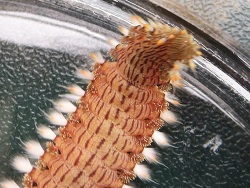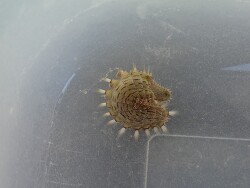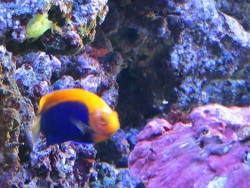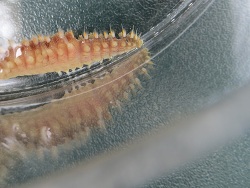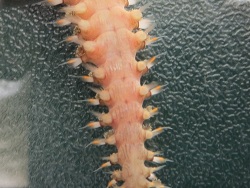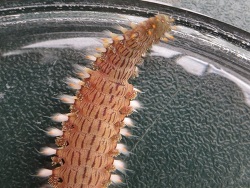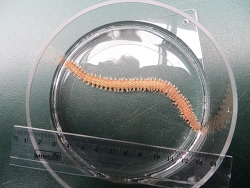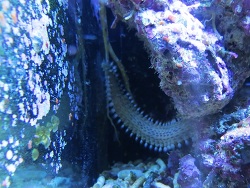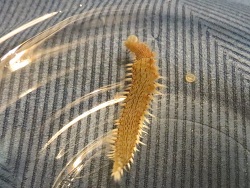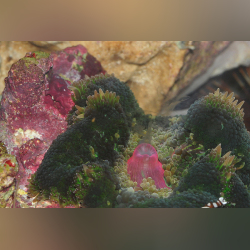Info
Pherecardia striata (Kinberg, 1857)
Lined Fireworm is common on reefs.This species hunts normerly small invertibrates and is omnivores (eating sea stars, algae, other worms, and molluscs).
The bristles can lead to inflammation when touched.
Don't touch them!
Biota > Animalia (Kingdom) > Annelida (Phylum) > Polychaeta (Class) > Errantia (Subclass) > Amphinomida (Order) > Amphinomidae (Family) > Pherecardia (Genus)
Lined Fireworm is common on reefs.This species hunts normerly small invertibrates and is omnivores (eating sea stars, algae, other worms, and molluscs).
The bristles can lead to inflammation when touched.
Don't touch them!
Biota > Animalia (Kingdom) > Annelida (Phylum) > Polychaeta (Class) > Errantia (Subclass) > Amphinomida (Order) > Amphinomidae (Family) > Pherecardia (Genus)







 Scott & Jeanette Johnson, Kwajalein Unterwater
Scott & Jeanette Johnson, Kwajalein Unterwater


